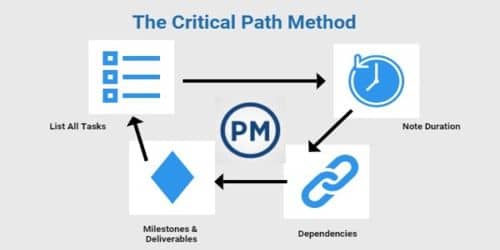PERT is a project management tool that provides a graphical representation of projects timeline. The CPM is ideally suited to projects consisting of numerous activities that interact in a complex manner. It can help you keep your projects on track.
A complex project would normally encounter several delays and may surpass the budget allocated for it making a project very costly and which may lead to losses. While many techniques fail in solving these problems, there are two tools which have been proven to be effective. The two most effective and widely used techniques are the Program Evaluation and Review Technique (PERT) and the Critical- Path Method (CPM).
Differences between these two are as follows:-
CPM
- CPM, an acronym for Critical Path Method.
- CPM can control both time and cost when planning.
- The deterministic concept is used.
- CPM has been applied mostly to project that employs a fairly stable technology.
- It is very risky and uncertainty methods.
- CPM network diagram is activity oriented.
- The orientation of CPM is ‘deterministic’.
- Duration of activity may be estimated with a fair degree of accuracy.
- CPM is a statistical technique of project management that manages well-defined activities of a project.
PERT
- PERT, an acronym for Program Evaluation Review Technique.
- PERT can only control cost when planning.
- The probabilistic model concept is used.
- PERT is eminently suitable for research and development programs, aerospace projects, and other projects involving new technology.
- It is a risk-free method.
- Generally, the PERT network diagram is event oriented.
- The orientation of PERT is ‘probabilistic’.
- Estimate of time for activities is not so accurate and definite.
- PERT is a project management technique, used to manage uncertain activities of a project.













